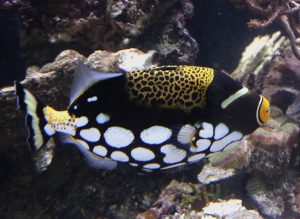I’m sure that many readers
of this ezine know that our editorial policy is to bridge the gap
between anecdotal hobby literature and science. Whenever possible
we try to publish material from practicing scientists, and in
that way to present information that is factual derived, not
based upon someone’s opinion. For example, it is becoming
clear, from the work of scientists like Lee Goldman that corals
benefit far more from live food than artificially manufactured
food. This is not definitive yet, but recent controlled studies
are coming to that conclusion.
In the next issues to come we have more exciting and useful
information to publish. To wet your appetite, let me
illustrate:
- A Product Review, “Alkalinity Test
Kit Showdown” by Dana Riddle tests the popular alkalinity
test kits on the market for accuracy. - Adam Blundell returns to his Lateral Lines
column with, to quote the author, “This column is
intended to foster a discussion on larval rearing systems. The
information presented here are the current and ongoing
developments of larval rearing systems used by hobbyists and
researchers alike. Future articles will show the construction
and design of rearing systems.” - A Feature article by Dana Riddle on coral
identification will be published soon. - Another Feature article coming is
“Identifying Parasitic Diseases in Marine Aquarium Fish.
A Hobbyist’s Guide to Identifying Some Common Marine
Aquarium Parasites by Terry D. Bartelme - Also in the works is a series of articles on
Cyanobacteria by Sara Allyn Mavinkurve.
I’m looking forward to this, as in my opinion
Cyanobacteria is a constant problem in closed system reef
tanks. - I’m working on a product review of
ways to remove scratches on the outside and inside of acrylic
aquariums, especially large tanks like mine. So far I have
found that using the Everclear Acrylic Scratch Removal kit
works very well on the outside pane. I intend to also see how
it works on removing scratches from the inside when the tank is
filled with seawater and sea life. Part of this product review
will deal with various devices to remove coralline algae from
acrylic tanks without scratching them. For myself and others
this is quite a challenge.
A note on my Clown Triggerfish. My triggerfish in about a year
has grown from a 1.5-inch juvenile to a 7-inch adult. It is very
beautiful, and does not bother any of the corals, clams, snails,
crabs, or sea cucumbers in my reef tank. However, it is starting
to show some aggressiveness toward other fish in the tank,
especially large ones its size. This aggression only takes place
at feeding time. It has not so far done any damage. Another habit
it has developed that has me concerned is its growing interest in
digging in the substrate. How far its landscaping behavior will
go is hard to know. Fortunately, I can easily remove the trigger
if it becomes necessary– it eats out of my hand.










0 Comments